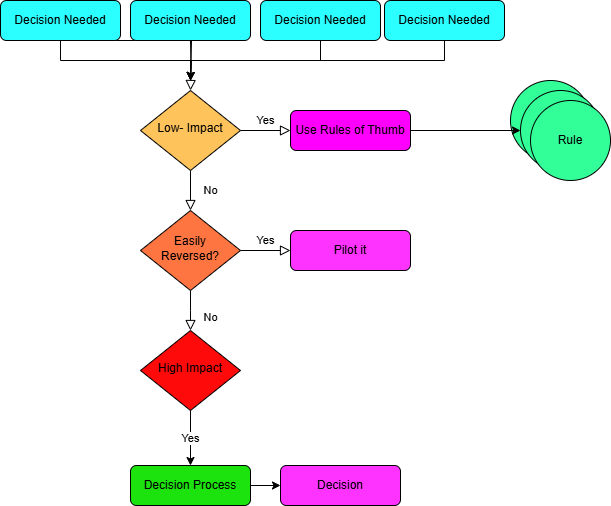First: Don’t make decisions in H.A.S.T.E. (Hungry, Angry, Sad, Tired, Excited) – pause, check in with yourself, and decide what kind of attention this decision needs."
Triage is about prioritizing wisely, but to do that, you need to be in the right headspace. In bad times, it's easy to make snap decisions. Know when to slow down and assess. Triage helps you sort and prioritize decisions, not just in emergencies, but in everyday life.
What is Triage?
Triage is used in medical emergencies to sort patients by urgency. The idea is simple: focus on what needs immediate attention and what can wait. But triage isn’t just for life-or-death situations—it’s crucial for everyday decision-making. Use it to decide how much effort each decision deserves.
Before You Dive In…
Not every decision is as simple as it looks. A small choice can have big consequences, and a complex one might just need a quick pro-con list. Before you dive in, pause. Most decisions are straightforward, but some require more thought. The hardest ones combine emotional weight with complexity. These need the most careful attention—don’t rush in.
"Triage is the art of making decisions under pressure; it's not just about sorting the urgent from the important, but about saving lives with every choice."
Types of Decisions: From: “Do I eat dessert?” to: BIG Life Choices
When triaging a decision, the key factor to consider is potential impact. This includes both positive and negative outcomes, and how the decision affects you, the other stakeholders, and even broader society. While impact is the primary guide, urgency and complexity also play important roles.
To visualize this, think of the Eisenhower Matrix, which breaks decisions into four categories based on urgency and importance:
Low urgency, low importance (quick decisions with minimal impact).
Low urgency, high importance (long-term decisions that can be planned carefully).
High urgency, low importance (minor decisions that need quick resolution).
High urgency, high importance (critical decisions requiring immediate attention and careful thought).
This matrix helps you decide how much time, energy, and resources each decision deserves. For decisions with high impact, it's worth pausing and digging deeper, even if they don’t feel urgent. Meanwhile, low-impact decisions shouldn’t drain your energy.
How to Apply Triage in Real Life
Triage isn’t just a tool for emergencies—it’s a way to handle decisions every day. The first step is to pause and assess the potential impact, urgency, and complexity. Ask yourself:
What’s the potential impact? Will this decision have a major effect on you, others, or the broader picture?
How urgent is it? Can this wait, or does it need an immediate answer?
How complex is it? Do you need more information, or can a rule of thumb suffice?
Don’t waste time on trivial or easily reversed choices and ensure you’re giving the right attention to what matters most.
Whether it’s deciding what to work on today or making a long-term life choice, triage helps you focus your time, energy, and resources on what’s important.
Rules of Thumb for Low-Impact Decisions
Most decisions don’t need deep analysis. For low-impact choices, simple rules of thumb can save time and energy while still leading to good outcomes. By committing to these rules ahead of time, you can handle small decisions efficiently. Here are a few examples:
Dessert once a week: A simple way to balance indulgence and health.
Follow the 2-minute rule: If a task takes less than 2 minutes, do it right away.
Buy quality, not quantity: Invest in fewer, better-quality items that last longer.
Sleep on big purchases: Wait 24 hours before making non-essential purchases to avoid impulse buys.
These rules make small decisions easier, freeing up your energy for the bigger, more complex choices.
Not every decision deserves the same time and attention. Sort decisions based on their potential impact, urgency, and complexity. Simple rules of thumb handle low-impact choices, leaving you more energy for the complex and emotionally charged decisions.
The key is knowing when to pause, assess, and decide how much effort each choice deserves. With practice, this approach can help you manage decisions wisely and avoid making choices in H.A.S.T.E.
That’s My Perspective







